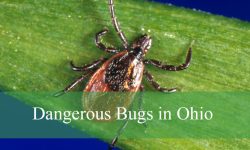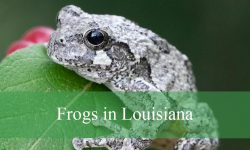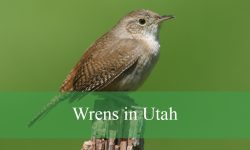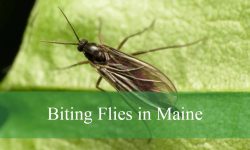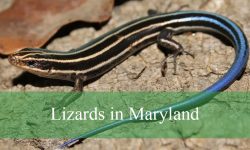If you’ve ever paused to watch a hummingbird hover effortlessly at a flower, you know just how mesmerizing these tiny birds can be. Pennsylvania hosts a surprising variety of hummingbirds, from the common Ruby-throated to rare vagrants that delight bird watchers.
Their rapid wingbeats and shimmering plumage make every sighting a miniature spectacle. Each species has distinct colors and behaviors, adding an element of excitement to backyard birding and nature walks alike.
In this guide, we explore 7 hummingbird species recorded in Pennsylvania, complete with pictures and identification tips. Bird lovers and casual observers alike will gain the knowledge to spot and appreciate these dazzling avian jewels.
Types of Hummingbirds Found in Pennsylvania
Ruby-throated Hummingbird (Archilochus colubris)

The Ruby-throated Hummingbird is the most common hummingbird in Pennsylvania, easily recognized by its bright red throat in males and shimmering green back. Females have a pale throat and are slightly larger than males. This species is a summer breeder and migrates to Central America during the winter.
These hummingbirds feed primarily on nectar from flowers such as bee balm, trumpet vine, and honeysuckle, but they also consume small insects and spiders for protein. Their feeding habits help pollinate many native plants, making them essential for local ecosystems.
Ruby-throated Hummingbirds are known for their agility and speed, capable of hovering in mid-air while feeding. They have rapid wing beats, approximately 53 beats per second, producing a humming sound that gives them their name.
In Pennsylvania, they typically nest from May through August. Females build tiny cup-shaped nests made of plant fibers and spider silk, often camouflaged with lichen. One to three eggs are laid, and the female alone incubates and raises the young.
Rufous Hummingbird (Selasphorus rufus)
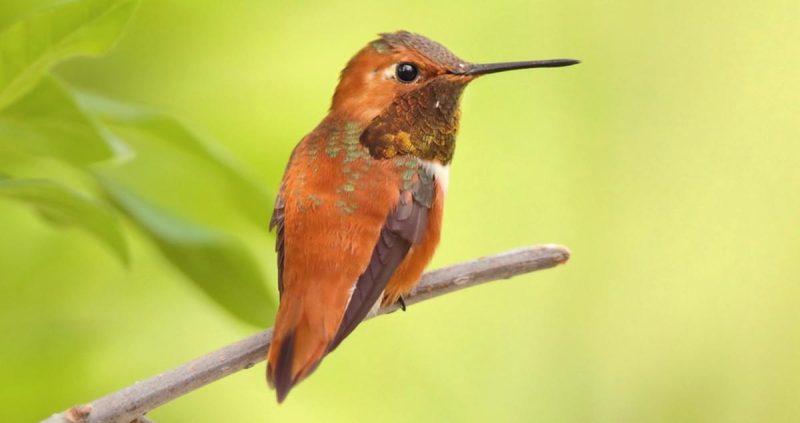
The Rufous Hummingbird is a striking bird with a bright orange-red throat in males, a green back, and rufous-colored flanks. Females are less colorful but still display rufous accents on their sides. This species is primarily a western bird, but occasional individuals migrate through or reach Pennsylvania during fall and winter.
Rufous Hummingbirds are highly territorial, especially males, who aggressively defend feeding areas against other hummingbirds and even larger birds. They feed on nectar and small insects, and their presence is often noticed due to their bold and feisty behavior.
These hummingbirds are long-distance migrants, traveling up to 3,000 miles between breeding grounds in the Pacific Northwest and wintering areas in Mexico. Their migration through Pennsylvania is rare but can be exciting for bird watchers hoping for a vagrant sighting.
Rufous Hummingbirds prefer feeders and flowers that provide high-energy nectar. In Pennsylvania, sightings are usually between late September and early November, often near gardens or flowering shrubs. Their bright plumage makes them relatively easy to identify despite their rarity.
Calliope Hummingbird (Selasphorus calliope)
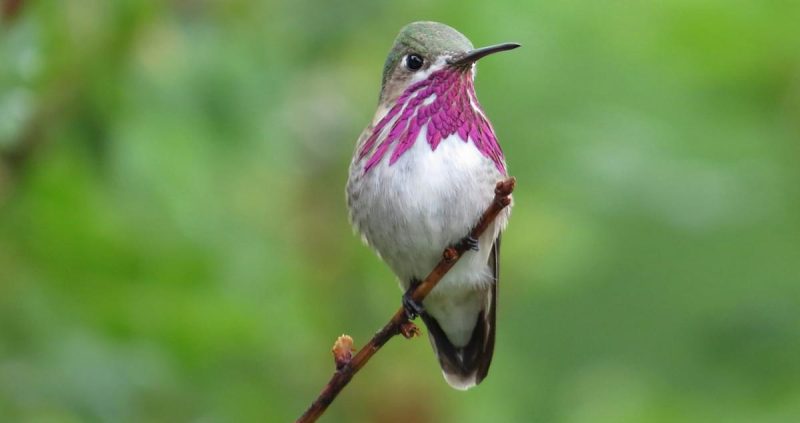
The Calliope Hummingbird is the smallest hummingbird species in North America, measuring just 3 inches long. Males display a striking magenta throat with streaks and a green back, while females have a paler throat and less vibrant coloring. They are occasional visitors to Pennsylvania, mainly during migration.
These tiny birds feed on nectar and small arthropods, favoring tubular flowers and feeders. Their small size allows them to maneuver skillfully among dense flower clusters, making them effective pollinators for certain plant species.
Calliope Hummingbirds are known for their remarkable endurance during migration, traveling thousands of miles from western breeding grounds to wintering areas in Mexico. Sightings in Pennsylvania are uncommon but highly cherished by birding enthusiasts.
In Pennsylvania, they are usually observed in gardens or parks with abundant nectar sources. Their delicate size and bright throat streaks make them easily distinguishable from other hummingbirds during brief appearances.
Broad-tailed Hummingbird (Selasphorus platycercus)
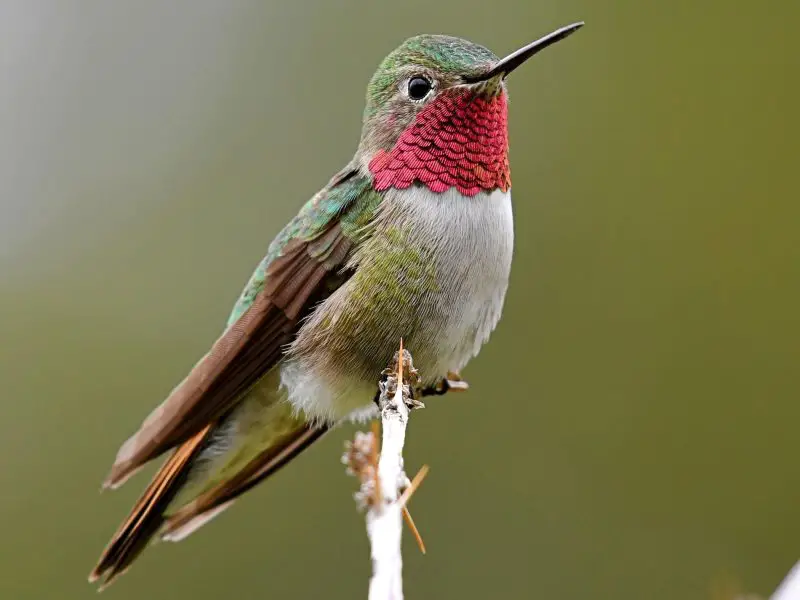
The Broad-tailed Hummingbird is primarily a western species with males showing a vivid rose-red throat, green back, and white underparts. Females are mostly green and white with subtle markings. In Pennsylvania, this species is considered a rare visitor, often appearing as a vagrant during migration.
These hummingbirds feed on nectar and small insects, preferring flowering plants with tubular blossoms. They are also known to defend feeding territories, although not as aggressively as Rufous Hummingbirds.
Broad-tailed Hummingbirds are known for their high-pitched, trilling song produced during territorial displays or courtship flights. Despite being rare in Pennsylvania, occasional sightings provide valuable data on migration patterns.
In gardens or parks, Broad-tailed Hummingbirds are often attracted to feeders and bright flowers. Bird watchers in Pennsylvania may spot them between late summer and early fall, though sightings are sporadic and unpredictable.
Allen’s Hummingbird (Selasphorus sasin)
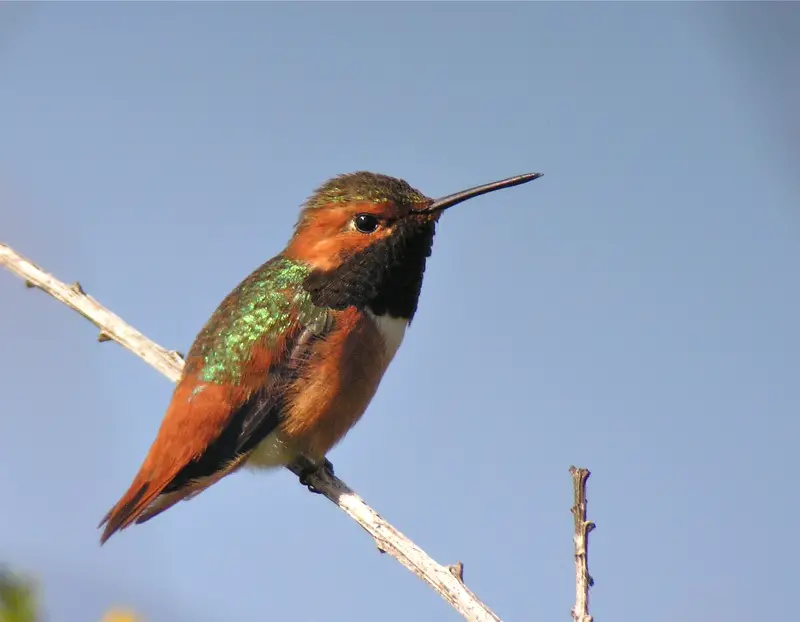
Allen’s Hummingbird is a small, iridescent species native to the western United States. In Pennsylvania, it is an extremely rare visitor, with only a few confirmed sightings. One notable record is from November 2012 in Pipersville, Bucks County, where an immature male was observed feeding at a backyard feeder during the winter months.
This species is characterized by its bright rufous back and crown, with a contrasting greenish throat and belly. Males display a brilliant iridescent red throat patch, while females have a less vibrant, but still striking, coloration. Their small size and swift flight make them agile feeders, often seen darting between flowers and feeders.
Allen’s Hummingbirds are known for their territorial behavior, especially during the breeding season. They often defend feeding areas aggressively, ensuring access to nectar sources. Their diet consists primarily of nectar from tubular flowers, supplemented by small insects for protein.
While sightings in Pennsylvania are rare, they highlight the species’ adaptability and the potential for range expansion. Bird enthusiasts in the state remain hopeful for future observations, especially as more backyard feeders are established and native flowering plants are cultivated.
White-eared Hummingbird (Basilinna leucotis)
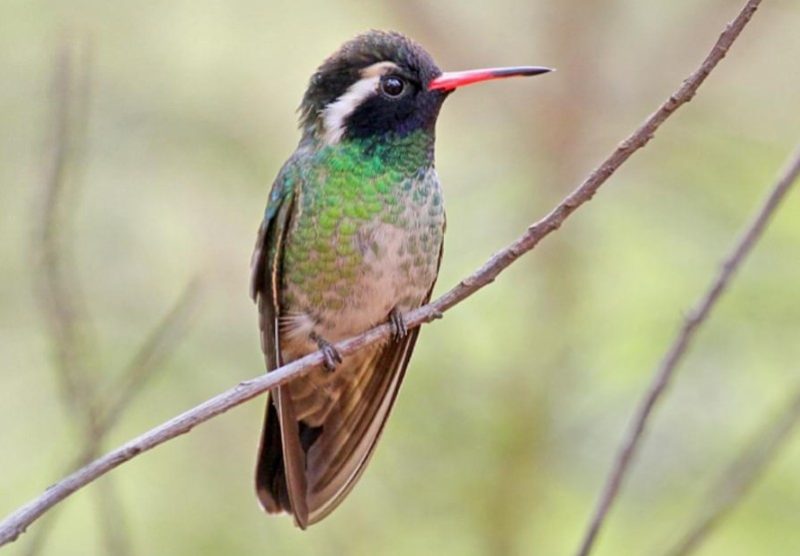
The White-eared Hummingbird is a striking species native to the mountainous regions of Central America. In Pennsylvania, it is considered an accidental visitor, with only a few unconfirmed reports. One such report includes a sighting in a backyard in Pennsylvania, where a white hummingbird was observed feeding at a feeder.
This hummingbird is distinguished by its white ear patch and a contrasting dark crown and back. Males possess a brilliant iridescent throat, while females have a more subdued coloration. Their plumage is generally green with metallic highlights, making them a beautiful sight when they catch the light.
White-eared Hummingbirds feed primarily on nectar from a variety of flowering plants, supplemented by small insects. They are known to inhabit forest edges and clearings at elevations ranging from 1,500 to 3,000 meters. Their breeding season varies with latitude, typically occurring from March to August in the northern parts of their range.
While their presence in Pennsylvania is rare and unconfirmed, these sightings underscore the importance of maintaining diverse and native plantings in gardens to attract a variety of hummingbird species. Continued observation and reporting can help track the movements and potential range expansion of this species.
Black-chinned Hummingbird (Archilochus alexandri)

The Black-chinned Hummingbird is a medium-sized species native to the southwestern United States. In Pennsylvania, it is an extremely rare visitor, with only one confirmed record. In November 2013, an adult male Black-chinned Hummingbird was observed in Franklin County, marking the second state record for this species.
This hummingbird is characterized by its iridescent black chin, which can appear purple or green depending on the light. It also has a distinctive white line behind the eye and a slightly longer bill compared to other hummingbirds. Males display a vibrant throat patch, while females have a more subdued coloration.
Black-chinned Hummingbirds are typically found in desert and scrub habitats, where they feed on nectar from a variety of flowering plants and small insects. They are known for their territorial behavior, especially during the breeding season, and are often seen defending feeding areas aggressively.
The sighting in Pennsylvania was a rare event, highlighting the species’ potential for range expansion. While their presence in the state is uncommon, continued observation and reporting can provide valuable data on their movements and habitat preferences.
Best Time and Places to Observe Hummingbirds in Pennsylvania
Seasonal Timing
The best time to see hummingbirds in Pennsylvania is during their spring and summer migration. Ruby-throated Hummingbirds, the most common species, typically arrive in late April or early May and remain until early September. Rare species like Rufous, Calliope, and Black-chinned Hummingbirds are more likely to appear during fall migration, from late August through November.
Preferred Habitats
Hummingbirds favor areas rich in flowering plants and nectar sources. In Pennsylvania, the most productive locations include gardens, parks, and forest edges with native flowers such as bee balm, trumpet vine, cardinal flower, and honeysuckle. They are often attracted to backyard feeders filled with a sugar-water solution, especially when natural nectar is limited.
Ideal Observation Tips
To maximize sightings:
-
Set up feeders early in spring and keep them clean to prevent mold or fermentation.
-
Position feeders in open areas near shrubs or trees, offering perches for resting.
-
Look for their hovering flight and rapid wingbeats, particularly during the warmest parts of the day when they are most active.
FAQs About Hummingbirds in Pennsylvania
Which hummingbird species are most common in Pennsylvania?
The Ruby-throated Hummingbird is the most common and the only regular breeder. Rare visitors include Rufous, Calliope, Allen’s, Black-chinned, Broad-tailed, and White-eared Hummingbirds.
Can hummingbirds survive the Pennsylvania winter?
Most hummingbirds migrate south to Central America or the southern United States for winter. It is extremely rare for them to overwinter in Pennsylvania, though occasional sightings of cold-hardy individuals have been reported near heated feeders.
What should I feed hummingbirds?
A simple 4:1 sugar-to-water solution is ideal. Avoid honey, artificial sweeteners, or red dye, which can harm the birds. Feeders should be cleaned every 2–3 days in summer to prevent fermentation and mold growth.
How can I attract rare hummingbirds like Rufous or Calliope?
Planting native flowering plants that bloom late in summer and maintaining feeders through early fall increases the chances of attracting rare migratory species. Observing during late August to November improves the likelihood of spotting vagrants.
Are hummingbirds territorial?
Yes, male hummingbirds are highly territorial, especially around feeders and flower patches. They will chase other hummingbirds and even larger birds to protect their food source.

